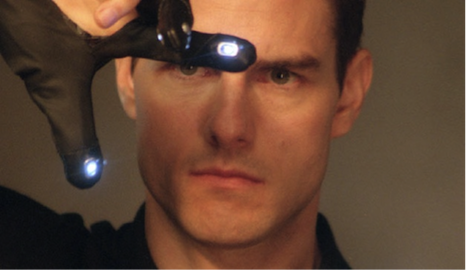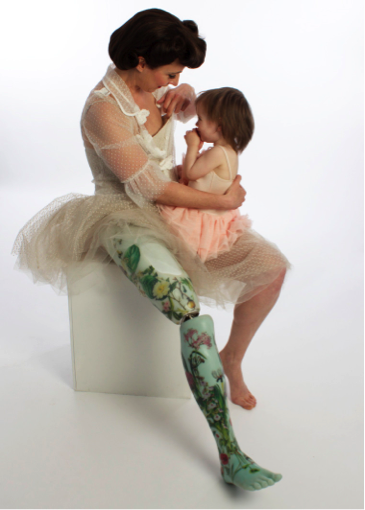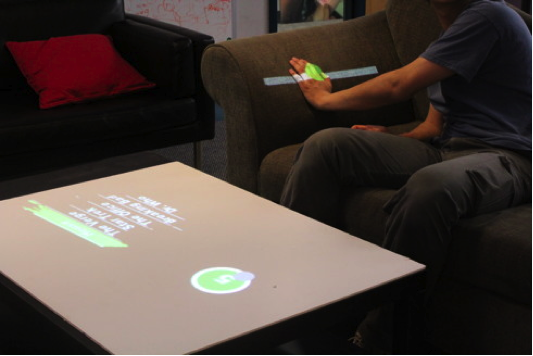A couple of weeks ago I was lucky enough to go to Planning-ness 2013 in Boston. It’s an alternative event for planners who like to do as well as think, with the big idea being that you ‘get excited and make things’. So instead of just sitting in a big room scribbling on your pad as the Keynote presentations roll by, there are loads of practical workshops and you actually get to be creative with the people there. (Not just stand next to them drinking coffee.)
During one of the sessions, run by the geekily chic Vladimir Pick from Undercurrent in New York, we explored the question, ‘How can we create computer-free digital experiences?’
As the worlds of hardware and software collide, our interactions with the digital world are moving beyond the computer screen. And because our interactions increasingly happen through a network of connected sensors and haptic devices, there’s an amazing opportunity to design more and more experiences that bridge the physical and digital.
It’s an exciting future where—because of developments in hardware and software—man and machine become one.

Man and machine
Since the Stone Age, man and tools have been synonymous with productivity and making stuff. Today, because of technology, that stuff is just more sophisticated and possibly more intimidating. Picking up a hammer and hitting a nail we get; making a photocell light sounds harder.
But, according to Adafruit founder and CEO, Limor Fried, it doesn’t have to be this way. Through a series of online resources and tools, Fried’s company explains and sells the components behind our gadgets, helping people become more comfortable with what’s going on inside.
Fried envisions a world where people treat hardware the same way they do software, using open-source tools to start their own companies. Her vision is an inspiring one, as she seeks to democratise the making of electronics and enable us all to tap into our inner innovator.
To see just how easy it can be, check out her YouTube demo on how to make your Chuck Taylor All Star sneakers glow:
Superhuman
Companies like Adafruit have huge potential to disrupt because they make it easier for all of us to get our hands dirty. Combine this type of company with the likes of a Makerbot, and the sky’s the limit.
This technology doesn’t just have to be used for frivolous stuff, though. Thanks to the Paralympics, we’re all familiar with the power of technology to enhance our performance. And now, with developments in 3D printing, this principle is within reach of everyday people with disabilities – not just elite athletes.
Instead of having to pay through the nose for expensive gadgets to improve their lives, it’s now possible for people to make exactly what they want to meet their personal needs. For example, Bespoke Innovations uses 3D printers and scanners to create prosthetic leg covers. The aerodynamic covers, which the company calls ‘Fairings’, are custom-made for each person.

3D printing solutions like this also move prosthetics into the world of personalisation and fashion. Here in the UK, the Alternative Limb Project is already helping people with missing limbs make a statement with its fashionable, unconventional prosthetics.
Founded by Sophie de Oliveira Barata, a graduate of the London Arts University, the start-up helps people create fashionable bespoke limbs that convey aspects of their personality and interests. So far, they’ve built a ‘stereo leg’ with built-in speakers for a songwriter, a modular anatomical design for a former soldier and a floral prosthetic for a young mother, among others.

Keep in touch
While Tom Cruise’s Minority Report might not have arrived quite yet, it’s pretty damned close. Ubiquitous, gesture-controlled interfaces are one step closer to reality, thanks to a new system developed at Carnegie Mellon University.
WorldKit lets you create interactive apps on any surface, just by waving your hand. Instead of being tied to your hardware, it’s designed to make the world your touchscreen. Right now, the system involves a ceiling-mounted camera and projector that record hand movements, then project images onto the surface of your choice. Potential uses include TV remote controls, which can be accessed by rubbing the arm of a sofa, or calendars that can be swiped onto doors.

Catch the slightly techie YouTube video:
And Carnegie Mellon University aren’t the only ones exploring touch and gesture control. Thalmic Labs is the developer of the MYO, the gesture-controlled armband. This clever bit of kit lets you use the electrical activity in your muscles to wirelessly control your computer, phone, and other digital technologies.
Using groundbreaking technology, MYO is able to measure electrical activity in your muscles instantly. The result is a seamless way to interact with computers, and a truly magical sense of control that will bring out the Jedi in all of us.
See MYO in action on YouTube:
So what does the future hold for us humans as we meld increasingly with the hardware and software that surrounds us? Is enhancement the next level of our evolution? And will design provide the means to upgrade us from human to superhuman?
Perhaps the last line should go to Tony Stark, aka Marvel Comic superhero Iron Man, ‘What part of invincible Iron Man didn’t you understand?’
About the Author

Greg Taylor became founding partner in global brand design consultancy Elmwood in 1989. Now Director of Brand Provocation, Greg is the creator and facilitator of Step Change™, Elmwood’s strategic tool for moving ideas forward. Clients include ASDA, Wal-Mart, Arla Foods, BBC, COI (Defra and DfT), Cable&Wireless, Comic Relief, Debbie & Andrew’s, Durex, Glasgow 2014 Commonwealth Games, McCain, and the Met Office.